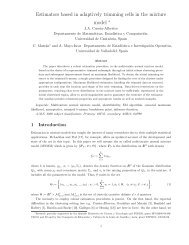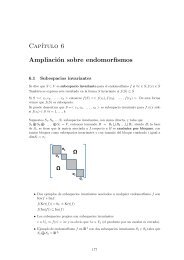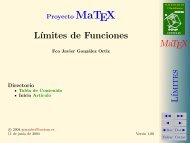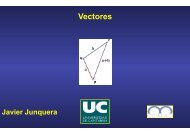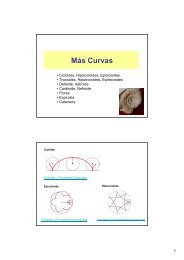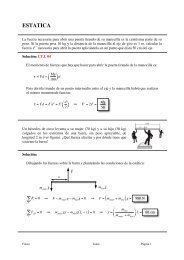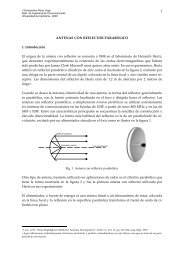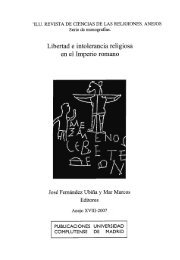10.0 Distribución de Aire
10.0 Distribución de Aire
10.0 Distribución de Aire
Create successful ePaper yourself
Turn your PDF publications into a flip-book with our unique Google optimized e-Paper software.
5.- Ventiladores (I)<br />
T10.- DISTRIBUCION DE AIRE<br />
Son máquinas <strong>de</strong>stinadas a producir movimiento <strong>de</strong> aire<br />
• Caudal volumétrico<br />
• Incremento <strong>de</strong> la presión estática<br />
• Potencia disponible<br />
• Rendimiento <strong>de</strong>l ventilador<br />
• Ruido, las dimensiones, y el modo <strong>de</strong> arrastre<br />
Tres tipos <strong>de</strong> presiones:<br />
– Presión estática, sobre las pare<strong>de</strong>s <strong>de</strong>l conducto<br />
– Dinámica, al convertir la energía cinética en presión<br />
– Total que es la suma <strong>de</strong> las dos<br />
5.- Ventiladores (II)<br />
Clasificación <strong>de</strong> los ventiladores (I):<br />
T10.- DISTRIBUCION DE AIRE<br />
• Por la diferencia <strong>de</strong> presión estática:<br />
– Alta presión: 180 < ∆p > 300 mm.c.a.<br />
– Media presión: 90 < ∆p < 180 mm.c.a.<br />
– Baja presión: ∆p < 90 mm.c.a.<br />
• Por el sistema <strong>de</strong> accionamiento:<br />
– Accionamiento directo<br />
– Accionamiento indirecto por transmisión<br />
• Por el modo <strong>de</strong> trabajo (I):<br />
– Ventiladores axiales: mueven gran<strong>de</strong>s caudales<br />
con incrementos <strong>de</strong> presión estática baja<br />
Hélice<br />
Tubo axial: en una envolvente, dan mayores<br />
presiones, generan mucho ruido<br />
P estática : en todas las direcciones<br />
P dinámica : en la dirección <strong>de</strong>l flujo<br />
P<br />
din =<br />
2<br />
v<br />
2 g<br />
[ m]<br />
21<br />
22



